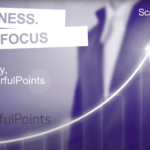Time pressures aside, tenders are a great opportunity to reflect on the achievements, successes, breakthroughs and new offerings we bring to existing or potential clients. So, it always surprises me when we’re assisting with a tender for an incumbent, and I hear them say ‘Oh we don’t need to include any information about (insert service or product offering)’ … the client knows about it already.
It’s important to understand that the tendering landscape and requirements have changed significantly over recent years. It’s the job of the procurement team (who are often independent and therefore have no relationship with you) to make sure the tender process and submitted documentation comply with principles of transparency and equality, no one group is unfairly advantaged. This means procurement processes are now more robust and much more structured. What it also means is that each time you make an assumption that the client knows what you can offer, what you stand for, your point of difference, your experience or your added value, you are providing an invaluable opportunity for your competitors.
With that in mind, I have a list of key Do’s and Don’ts that I use to approach each tender I work on with my clients.
Don’t
Don’t
Do
Do
Do
If you really want to be successful and retain your position (or even better, add to your offering), you must approach the tendering process with the expectation that your key competitors will claim their product or service is better and cheaper. It’s your job to make sure your client doesn’t agree.




